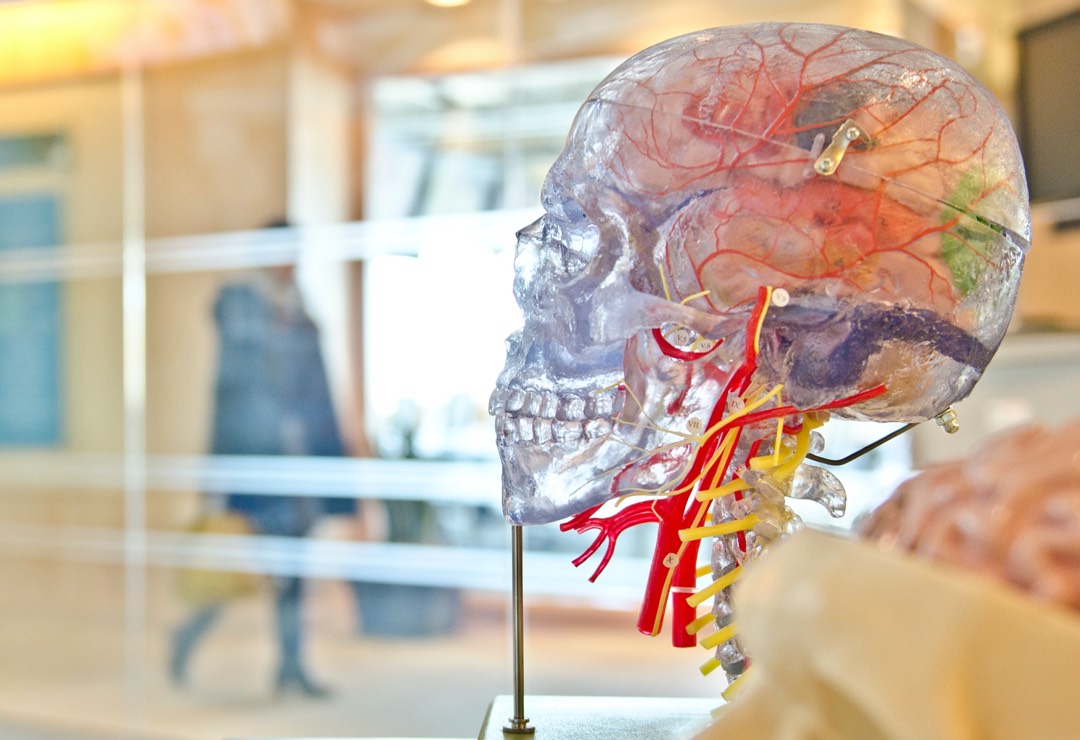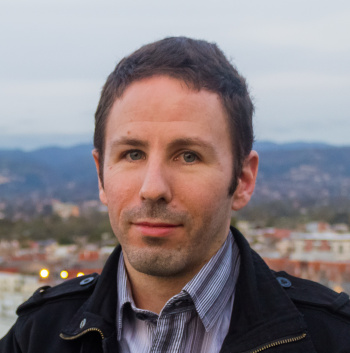
South Australian Science Teachers Association
1993/1994 Oliphant Science Awards Trophy Winner – Mark Hodson
Posted by Oliphant Science Awards
on 29/06/2021

by Mark Hodson
I was the first two-time winner of the Oliphant Science Awards, entering on both occasions in the computer category. The recognition and the opportunities that came with the award helped cement my love of systematic problem solving and computer programming, leading to an engineering career with international connections. Today I am working, still from Adelaide, for a California-based start-up building quantum computers and the superconducting quantum processors that power them.
My love of computer programming began in 1988 when my parents, after much pestering, finally bought me a Commodore 64. It’s an investment for which I am forever grateful.
Rather than just play games, I was gifted a ream of back-issues of Ahoy! magazine, which taught me about programming. Using these do-it-yourself guides I learned assembly language, which gave me an appreciation for how computers work at the electronics level. I also learned “BASIC” and over the years created many programs and games.
During high school, Commodore 64’s gave way to IBM PCs whose assembly language I also learned, and where high-level programming options were opening up to include PASCAL and C. It was my student friend James Jolley who introduced me to Turbo-C, a compiler for the C language, and together we honed our programming skills, exchanging our latest wares on 3.5” floppy disks.
It was then 1993 and I was in Year 11. I knew by this time I wanted a career in computer programming, and so had loaded up with pure maths and science subjects for SACE. I remember my physics teacher at the time, Bela Toeroek, who became a mentor of mine. He thought it was great that I wanted to get into engineering at university, but politely suggested I “stop cruising” on assignments. Suddenly I was being docked marks on assignments for reasons like “not enough detail here” or “you could have done more”. Bela taught me the skill of over-delivery; something I would use 25 years later to help win business with global Fortune 500 companies.
It was the Year 11 physics curriculum from which James and I drew inspiration in our joint Oliphant entry; a computerised teaching aid that implemented physics simulations and animations designed to help engage students, who didn’t always think physics was fun. I recall one of my contributions was a physics-based simulation of wave reflection which laid out walls on the screen similar to the old Atari game “Berzerk”, and then propagated a wave like a water droplet through the maze. My favourite contribution from James was a hilarious animation featuring protagonist “little Johnny” who, upon crash-landing his UFO, slid across the ice at such speed that the generated heat melted the ice and he fell “plop!” into the freezing water below. We’ll excuse the poetic license and admit that we did not calculate the coefficient of friction of metal on ice, but suggest that it could have been a great class exercise to prove that it was an unlikely story.

In 1994 I was in Year 12 and the Magic Eye books were all the craze; books of auto-stereograms that revealed a 3D image if you could train your eyes to diverge in just the right way. I could see distortions in the horizontally repeating patterns, and wondered - how did they work? The display resolution of computer graphics was at the same time becoming sufficiently detailed that you could possibly generate these on-screen, not just in print. I started placing tiles of random dots on the screen and shifted them in various ways until I finally cracked the code.

And so, the concept for my 1994 Oliphant entry “3D Optix” was born. It won, and I was honoured to receive the award from Sir Mark himself. I had a lot of fun with the program, demonstrating it at a TAFE exhibition, and at the then Investigator Science Centre at Wayville. It was a good experience to explain its workings to people of all ages and backgrounds. I was also invited to attend the Australian International Space School in Canberra, where science teachers from across Australia converged together with NASA astronaut Scott E. Parazynski to teach budding science and technology students about space and astronomy.

My SACE grade awarded me a place in the Bachelor of Computer Systems Engineering at Adelaide University, which I completed with first class honours. I kept honing my programming skills, coding fast 3D rendering systems in the pre-GPU era, Fourier transforms for real-time audio effects, and became part of a “demo group” JiNX where we stitched these together with computer-generated art and music into demos, winning the locally-held demo competition “Coven” held in the city.
During university I took on work placements at the Defence Science and Technology Organisation (DSTO), and at small engineering firms including Vision Systems at Technology Park. Comparing the two environments, I felt the private sector was more dynamic and would build the better engineer, and enthusiastically accepted my first full-time position as a junior engineer at Vision Abell. There I spent three and a half years working on information security and hydrographic database projects, learning about project management, systems engineering and software engineering through formal training and a cohort of great managers and supervisors.
Without any idea about what I wanted to do next, I joined a mate working at DSTO on year-by-year contracts. This went on for more than a decade and became something of a sub-career in modelling and simulation. At DSTO I had time to master C++ development, software architecture and design, with the occasional branch out into real-time systems and RF control hardware. I also got involved in writing papers and presenting at conferences. I enjoyed working at the boundary of new research ideas and helping to transition them into solutions that helped the Australian defence force.
 I took over the business under which I was contracting in 2008, and around the same time had connected back with a close friend who was working in the Department of Biochemistry and Molecular Biology at Monash University in Victoria. This began a ten-year side collaboration to measure trends in embryonic kidney and lung development, for which 3D scans were being taken using a new Optical Projection Tomography machine. The “Tree Surveyor” application we developed was successful, making the front cover of the Development journal, getting a TV spot on SBS News, and has been licensed for research use in Australia, the United States, Israel, Germany, and China.
I took over the business under which I was contracting in 2008, and around the same time had connected back with a close friend who was working in the Department of Biochemistry and Molecular Biology at Monash University in Victoria. This began a ten-year side collaboration to measure trends in embryonic kidney and lung development, for which 3D scans were being taken using a new Optical Projection Tomography machine. The “Tree Surveyor” application we developed was successful, making the front cover of the Development journal, getting a TV spot on SBS News, and has been licensed for research use in Australia, the United States, Israel, Germany, and China.
Having worked for ten years at the then-renamed DST Group in a mainly technical role, I sought an opportunity to be more involved in the business side of things, and to grow some leadership skills.
Development front cover [source]
It took a few years before I was fortunate enough to be introduced to a new start-up called QxBranch. A spin-out of Australian and United States engineering and consulting firms, QxBranch had a research agreement with Lockheed Martin to access their D-Wave Two quantum computer - a new machine that promised to revolutionise computation for hard problems across industries. Starting at just one day per week, things rapidly accelerated for QxBranch and in 2016 I accepted a full-time position and then became the Director of Software Engineering, leading the daily operations of a small team in Adelaide. Together we investigated how quantum computing might be used to solve industry applications for global Fortune 500 companies, working with their emerging technology and innovation teams, visiting all corners of the globe in the process.
Working for QxBranch was a watershed career move, and I would not be surprised if in 20 years I still cite it as a career highlight. I learned how to write compelling proposals, win strategic business, and mentor and support people in our internationally distributed team. In 2019 Rigetti Computing acquired QxBranch, and so I joined an even larger quantum computing start-up; this time one that is building quantum computing hardware based on superconducting “quantum bits”. I work remotely from Adelaide, with the nice problem of needing to wake up early to collaborate with folks at the NASA Quantum Artificial Intelligence Laboratory - not something I would have imagined doing when listening to Scott E. Parazynski all those years ago.
Today I’m a Dad to two young boys, the eldest of whom entered the Oliphant Science Awards for the first time last year, with a Papier-Mache model of a volcano (of course). I’m also helping local aerospace start-up Southern Launch with systems and software engineering support. Variety is still the spice of life! And it builds better engineers.
Archive
- December 2025
- November 2025
- October 2025
- September 2025
- August 2025
- July 2025
- June 2025
- May 2025
- April 2025
- March 2025
- February 2025
- January 2025
- December 2024
- November 2024
- October 2024
- September 2024
- August 2024
- July 2024
- June 2024
- May 2024
- April 2024
- March 2024
- February 2024
- December 2023
- November 2023
- October 2023
- September 2023
- July 2023
- June 2023
- May 2023
- April 2023
- March 2023
- February 2023
- January 2023
- December 2022
- November 2022
- October 2022
- August 2022
- July 2022
- June 2022
- May 2022
- April 2022
- March 2022
- February 2022
- January 2022
- December 2021
- November 2021
- October 2021
- September 2021
- August 2021
- July 2021
- June 2021
- May 2021
- April 2021
- March 2021
- February 2021
- January 2021
- December 2020
- November 2020
- October 2020
- September 2020
- August 2020
- July 2020
- June 2020
- May 2020
- April 2020
- October 2018
- September 2018
- August 2018
- July 2018
